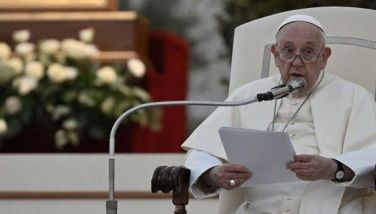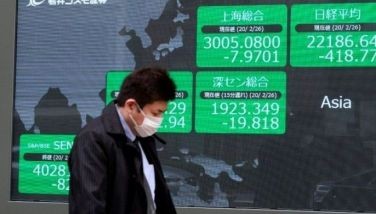Gas prices may jump from California emissions law
SAN FRANCISCO — California's greenhouse gas reduction law already has shaken up the state's industrial sector, costing it more than $1.5 billion in pollution permit fees.
It's now poised to hit the pocketbooks of everyday Californians.
Starting next year, the law will force fuel distributors into the same cap-and-trade marketplace as utilities and major manufacturers. The oil industry says it will lead to price increases of at least 12 cents a gallon immediately, while state regulators say any price spikes could vary widely, from barely noticeable to double-digits.
Anticipating angst at the pump, a leading state lawmaker is raising concerns about the uncertainty of the law's impact on prices for consumer fuels, including gasoline, natural gas, propane and heating oil. Senate President Pro Tem Darrell Steinberg, D-Sacramento, says the state should scrap the plan to put fuel producers under the cap-and-trade provision of the law and instead institute a 15 cent-per-gallon "carbon tax."
Cap-and-trade sets a limit, or cap, on emissions of heat-trapping gases and requires companies to pay for each ton of pollution they emit, the price of which is determined in an allowance auction. Polluters that cut emissions below the cap can sell their leftover pollution permits, called allowances, to companies that need extra.
The program is a central part of AB32, the greenhouse gas reduction law that passed the Legislature and was signed by former Gov. Arnold Schwarzenegger, a Republican, in 2006. But it is just one of several provisions of the law — such as requiring lower-carbon fuels — meant to prompt Californians to change their transportation and energy consumption habits as the state seeks to reduce emissions of heat-trapping gases to 1990 levels by 2020.
The California Air Resources Board, which designed and implemented cap-and-trade, differs with Steinberg's assessment and projects no noticeable increase in gas costs after Jan. 1. But the board's own economic analysis of AB32 from 2010 shows that diesel prices could rise from 3 percent to 23 percent, with gasoline prices rising 5 percent to 32 percent, depending on market factors associated with the global warming law's programs.
The industry and some economic forecasts have predicted a 10- to 12-cent increase in the price per gallon at the pump, and Steinberg says those prices could spike as high as 40 cents a gallon.
Still, Mary Nichols, chairwoman of the Air Resources Board, said oil companies have had since 2010 to prepare and are not required to pass on the costs to consumers.
"It would appear to be some deliberate measure on their part if there were to be a sudden rise in (fuel) prices on Jan. 1," Nichols said. "I would expect that they would incorporate the cost of the allowances into their pricing."
Steinberg's idea of charging a flat tax on carbon — rather than having the price change regularly because of cap and trade auctions — does not force polluters to reduce their emissions, Nichols said, which is key to the state's greenhouse gas law.
But it does allow for more stable pricing, said Steinberg, a Democrat from Sacramento.
"Under cap-and-trade, no one can tell us whether fuels will trade at 10 cents or 40 cents a gallon in 2015 or 2016, at any given timing and without a warning. On the other hand, a carbon tax is stable," he said.
He proposed a 15 cent-a-gallon carbon tax to offset what he said would be the indirect tax on consumer fuels once the companies that produce those fuels go into the cap-and-trade program next year.
Under his proposal for a flat carbon tax, introduced in the Legislature as SB1156, the tax would rise to 24 cents a gallon by 2020 and more than 40 cents a gallon by 2029.
About two-thirds of the estimated $3.6 billion raised by Steinberg's carbon tax would go back to households earning less than $75,000 a year in the form of a state-level Earned Income Tax Credit. The rest would go toward mass transit programs with the goal of getting more Californians out of their automobiles.
The legislative prospects for Steinberg's tax proposal, especially during an election year, are uncertain. But the oil industry has greeted his plan warmly.
Catherine Reheis-Boyd, president of the Western States Petroleum Association, said the cost of cap and trade allowances will add $2 billion to the costs of gasoline and diesel, or about 12 cents per gallon.
The group's oil company members are proposing to continue cap and trade on industrial facilities, but using a set carbon tax on fuels starting in 2015.
Jay McKeeman, spokesman for the California Independent Oil Marketers Association, disagreed with the assertion by Air Resources Board chairwoman Nichols that the industry could choose to shield consumers from price increases once it entered the cap-and-trade market.
"That is a bunch of hooey," McKeeman said. "When you're in a competitive market and people are getting assessed a significant amount for participating, (cost increases) get passed on to the customer."
He said the group preferred a flat carbon tax because it would be a stable amount.
The law's author, Democratic Sen. Fran Pavley of Agoura Hills, said projections of price spikes are "worst-case scenarios and scare tactics" developed by oil companies that found an unlikely ally in the Senate leader. She said she believes Steinberg wants to use the money raised by a carbon tax to fund tax breaks for low- and middle-income families.
"Their objective matches very well with Senator Steinberg's, and that is they don't want to be under the cap and they want to pass on the cost to the motorists," she said. "This is like their dream. You've got the Senate pro tem, because of his earned income tax credit, and the oil companies, who see, 'God, this is a win-win.'"
Eric Henry, who lives in the Sacramento suburb of Folsom, said he wasn't in favor of a big spike in gas prices but thought drivers would learn to adapt. He agreed that higher prices are probably needed to force people to be make changes in their consumption.
"No matter what you say to people, unless they see some kind of effect it's not going to prompt a change in behavior," said Henry, who works in sales.
Cap-and-trade is designed to moderate price changes, according to the Air Resources Board, but there is never 100 percent certainty that the cost of allowances or other factors could drive gasoline prices up or down.
Changing to a flat carbon tax now would be too large a task to ensure all of the details would be right by Jan. 1, said Severin Borenstein, a University of California, Berkeley economist who has advised the air board on its cap-and-trade program. Still, he said such a tax could prove useful in the future.
"I think that California has done a reasonably good job of designing a program that won't have wild fluctuations in allowance prices (which would lead to fluctuations in gas prices)," he said in an email.
For example, the system is designed with a floor and ceiling, or "price containment reserve," so that the cost of allowances cannot spin out of control.
But that doesn't mean there isn't still some risk of price spikes, according to a recent study by Borenstein. It found that spikes are possible if, for example, demand for emissions credits were to rise more than expected.
- Latest
- Trending




























